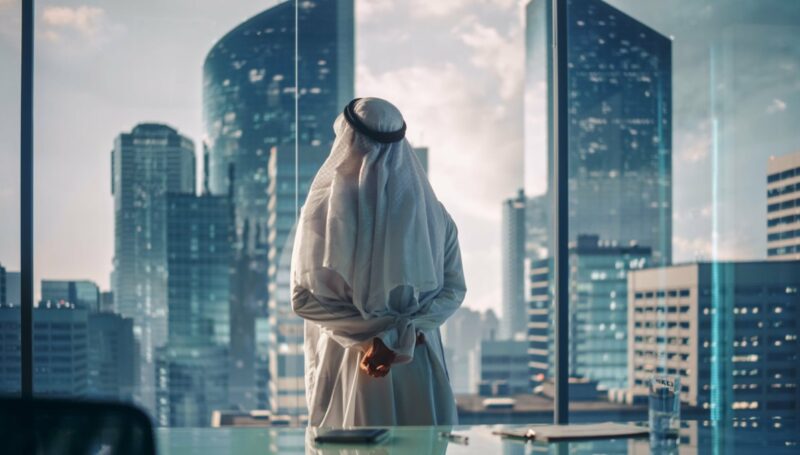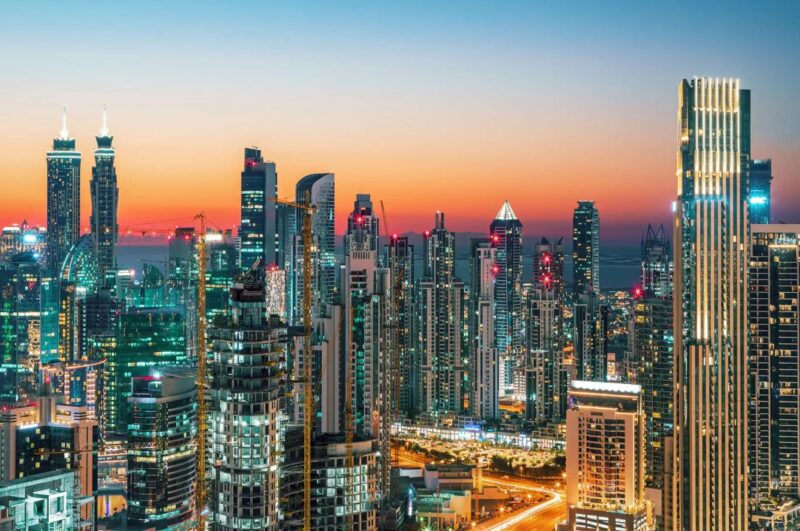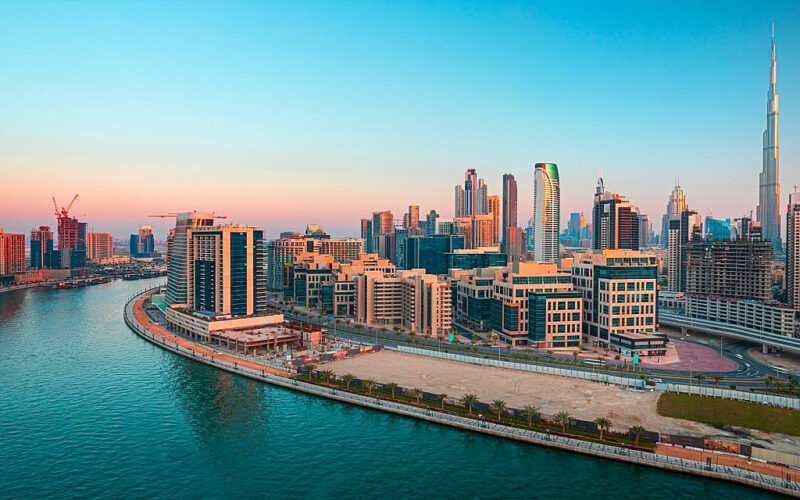The long-term outlook for off-plan real estate developments in the UAE remains fundamentally strong, driven by consistent population growth, investor-friendly regulations, and a maturing property market that continues to attract international capital.
Despite short-term fluctuations in global interest rates or oil prices, the UAE’s off-plan segment has evolved into one of the region’s most stable and transparent investment arenas. Investors entering in 2025 and beyond can expect steady appreciation across prime locations like Dubai Creek Harbour, Business Bay, and Saadiyat Island, with an average capital gain potential of 20–35% between purchase and completion.
This performance is not speculative; it is built on long-term urban planning, government-led infrastructure expansion, and a predictable real estate regulatory environment. The combination of high rental yields, flexible payment plans, and a continuous inflow of foreign buyers has turned off-plan projects into a secure, high-upside entry point for both regional and overseas investors.
Off-Plan Market Dynamics in the UAE

Off-plan properties, those purchased before completion, represent nearly half of all real estate transactions in Dubai as of 2025. This dominance is the result of several intersecting factors: developers offering 50–70% post-handover payment options, rising costs of completed units, and the city’s ongoing transformation into a global hub for finance, logistics, and tourism.
Dubai’s property ecosystem is distinctly future-oriented. Projects like Palm Jebel Ali’s revival, Dubai South’s smart city integration, and Abu Dhabi’s Yas Island expansion have strengthened investor confidence that long-term gains outweigh the risks of pre-construction purchases.
Off-plan projects in the UAE are typically priced 15–25% lower than ready properties in the same district, offering early investors an equity advantage even before handover. By the time construction concludes, these projects often experience value jumps aligned with the area’s development progress and infrastructure readiness.
| Metric (2025) | Dubai Average | Abu Dhabi Average |
| Off-plan share of total transactions | 47% | 32% |
| Average ROI post-handover | 6.8% | 6.2% |
| Capital appreciation (2–4 years) | 25–35% | 20–30% |
| Foreign ownership ratio | 45% | 30% |
Investor Confidence and Regulatory Foundations

The UAE has built a predictable and transparent property investment framework, critical for long-term stability. The Real Estate Regulatory Agency (RERA) mandates that developers open escrow accounts, preventing misuse of funds and ensuring construction proceeds as planned. This safeguard has transformed off-plan investing from a speculative gamble into a structured financial play.
In Dubai, the government’s Golden Visa initiative has further anchored investor confidence. Buyers investing AED 2 million or more in off-plan property can qualify for long-term residency, tying real estate growth directly to demographic expansion. This alignment of visa policy with investment thresholds encourages retention of international capital and repeat investments.
The long-term reliability of developers, especially those backed by state entities like Emaar, Aldar, or Meraas o strengthens confidence. These firms consistently deliver on timelines and maintain resale liquidity, a key metric distinguishing UAE off-plan projects from those in less-regulated emerging markets.
Why Off-Plan Remains a Strategic Long-Term Play
From a portfolio diversification standpoint, UAE off-plan assets serve two complementary functions: short-term appreciation during construction and long-term yield stability after handover. Investors who enter early in a project cycle can exit profitably upon completion or maintain ownership to benefit from consistent rental cash flow.
Moreover, payment schedules in off-plan deals are typically spread over several years, often requiring only 10–20% upfront, allowing investors to leverage capital across multiple developments without resorting to high-interest borrowing. This staggered financing model improves liquidity management, especially for international buyers balancing portfolios across global markets.
The UAE’s macroeconomic trajectory also supports this approach. GDP growth projections remain above 4% annually, tourism arrivals have surpassed pre-pandemic levels, and corporate relocations continue as global firms establish headquarters in Dubai and Abu Dhabi. These fundamentals sustain housing demand even as new supply enters the market.
Emerging Investment Hotspots (2025–2030 Outlook)

The next five years will see a geographic diversification of opportunities beyond traditional luxury zones. Dubai’s growth corridor is shifting south toward Dubai South, driven by logistics expansion tied to Al Maktoum International Airport and Expo City. Abu Dhabi’s focus remains on waterfront and cultural districts, with projects on Saadiyat and Jubail Islands commanding strong pre-launch demand.
| District / City | Key Projects | Projected ROI (2025–2030) | Investor Appeal |
| Dubai Creek Harbour | The Lagoons, Creek Beach | 30–35% | High-end waterfront community with business access |
| Business Bay | Peninsula, Canal Heights | 25–30% | Urban hub near Downtown and DIFC |
| Dubai South | South Bay, The Pulse Beachfront | 28–32% | Affordable entry with logistics-driven growth |
| Saadiyat Island (Abu Dhabi) | Louvre Residences, Grove District | 20–25% | Cultural and tourism integration |
| Yas Island (Abu Dhabi) | Yas Golf Collection, SeaWorld Residences | 18–24% | Family-friendly lifestyle and recreation focus |
Mid-Term Realities ─ Managing Risk and Returns
While the off-plan market offers above-average returns, it demands disciplined evaluation. Investors should assess developer reputation, construction progress, and resale demand before committing capital. Not all projects carry equal upside; some lower-tier developments may underperform due to oversupply or poor connectivity.
Price volatility is another consideration. Although UAE real estate cycles have shortened and stabilized since 2020, macroeconomic shocks, such as global inflation or changes in U.S. Federal Reserve rates, can temporarily slow demand. Nonetheless, these cycles have historically presented entry points for long-term investors, particularly when purchasing during early construction phases.
Choosing the best real estate agency in Dubai is often the most critical step in mitigating these risks. A qualified agency not only secures early access to pre-launch pricing but also ensures due diligence through legal verification, payment plan alignment, and post-handover management. Experienced brokers maintain networks with top developers, offering clients strategic entry into high-performing communities before public release.
The Long-Term Perspective ─ A Data-Driven Outlook

The next decade of UAE off-plan growth will likely mirror the city’s macroeconomic strategy,innovation-led, sustainability-focused, and globally integrated. Government initiatives promoting green building standards and smart city infrastructure will increase the premium on energy-efficient developments, making them especially appealing to institutional investors.
Dubai’s 2040 Urban Master Plan reinforces this trajectory by designating 60% of the city’s land for green and recreational spaces, expanding housing in suburban nodes such as Dubai Hills Estate and Tilal Al Ghaf. These zones are expected to see some of the highest appreciation rates due to their blend of livability, modern planning, and infrastructure access.
Meanwhile, Abu Dhabi continues to balance luxury coastal projects with community-based developments that support workforce housing and long-term tenancy. Its measured pace of growth ensures price resilience even during speculative phases in Dubai’s cycle.
|
Long-Term Indicator (2030 Projection) |
Forecasted Impact on Off-Plan Sector |
| Population (UAE) reaching 12 million | Expanding end-user demand |
| Golden Visa holders >200,000 | Long-term residency-linked investment |
| Green building compliance standards | Higher resale premiums for sustainable projects |
| Continued freehold zone expansion | More options for international investors |
Final Outlook
By 2030, the UAE’s off-plan market will likely stand as a model for managed growth in emerging real estate economies. The combination of transparent regulation, infrastructure investment, and global connectivity ensures that off-plan assets remain not just a speculative tool but a stable wealth-building strategy for long-term investors.
Those entering the market today position themselves at the midpoint of a multi-decade expansion cycle, one driven by urbanization, residency incentives, and international migration into the Gulf. The UAE’s real estate sector no longer relies on momentum alone; it is anchored in policy predictability, developer credibility, and tangible economic diversification.
In short, off-plan investments in Dubai and Abu Dhabi offer both stability and upside-down qualities rarely found together in global real estate. For investors with a five- to ten-year horizon, the UAE remains one of the few markets where property growth and national strategy move in the same direction.

